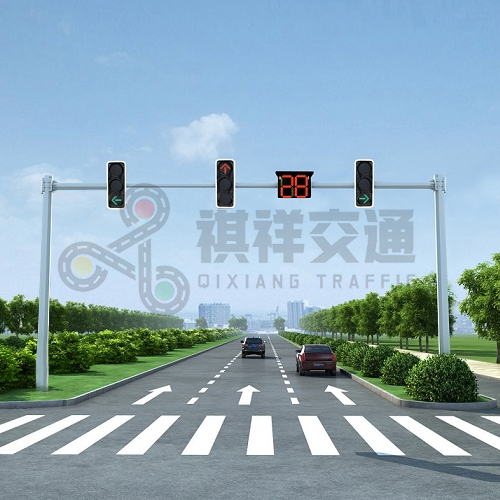Height-limited traffic light poles are an important tool for cities and municipalities to maintain road safety. These specialized poles are designed to ensure that over-height vehicles cannot pass underneath them, preventing potential accidents and damage to infrastructure. In this article, we will discuss the process of installing height-limited traffic light poles and the important considerations to keep in mind.
Before beginning the installation process, it is important to have a thorough understanding of local regulations and standards regarding traffic light poles. This includes specific requirements for height restrictions in areas where light poles are installed. It is also important to obtain any necessary permissions and permissions before proceeding with the installation.
The first step in installing a height-limited traffic light pole is to choose a suitable location. This should be a strategic decision based on factors such as traffic flow, pedestrian activity, and visibility. The location should also be chosen to allow adequate clearance for over-height vehicles while ensuring that the traffic light is visible to all road users.
After determining the location, the next step is to prepare the installation site. This may involve clearing the area of any obstructions, such as existing utility poles or structures, and ensuring the ground is level and stable. All safety protocols must be followed during this process to minimize the risk of accident or injury.
The installation of height-limited traffic light poles involves several key components, including the light pole itself, the height-limiting mechanism, and the traffic lights. The Pole should be securely anchored to the ground using appropriate fasteners and brackets to ensure stability and durability. Height limiter mechanisms are usually mounted on top of poles and are designed to prevent over-height vehicles from passing underneath them. The traffic lights are then mounted on poles of appropriate height, taking into account height restrictions.
When installing a height limiter mechanism, you must ensure that it is properly calibrated to the specified height limit. This may involve adjusting settings and conducting thorough testing to confirm their effectiveness. It is vital to follow the manufacturer’s guidelines and recommendations during this process to ensure the reliable operation of the height limiter mechanism.
In addition to the physical installation of height-limited traffic light poles, it is also important to consider electrical connections and wiring. This includes connecting traffic lights to a power source and ensuring they are functioning properly. It is vital to seek the help of a qualified electrical work professional to ensure compliance with safety standards and regulations.
Once a height-limited traffic light pole is installed, it must be thoroughly tested to confirm proper operation. This may involve simulating the presence of over-height vehicles to verify that the height limiter mechanism effectively prevents passage. It is also important to assess the visibility and functionality of traffic lights from various vantage points to ensure they are visible to all road users.
All in all, installing height-limited traffic light poles is an important aspect of maintaining road safety. Careful planning, compliance, and attention to detail are required to ensure poles are installed correctly and efficiently. By following proper procedures and seeking professional help when needed, cities and municipalities can enhance the safety of their road infrastructure and reduce the risk of accidents involving over-height vehicles.
If you are interested in height-limited traffic light poles, welcome to contact Qixiang to read more.
Post time: Jan-26-2024







